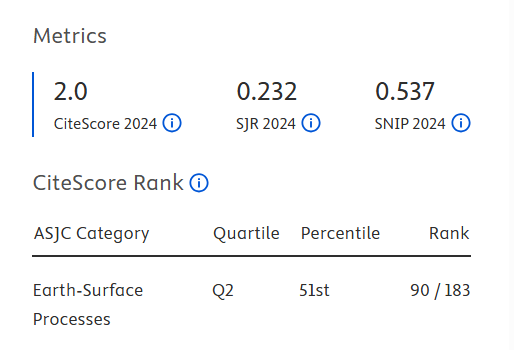The Effect of Ignition Timing on Combustion of Ammonia/Ethanol Mixtures in Spark-Assisted Compression Ignition Engine with a Sub-chamber

Downloads
Carbon dioxide (CO2) is the primary contributor to greenhouse gas emissions. Ammonia (NH3) has emerged as a promising alternative fuel due to its high energy density, ease of transportation, and carbon-free molecular structure. However, its practical application is challenged by slow combustion characteristics and high ignition temperatures. This study investigates the combustion behaviour of ethanol-ammonia mixtures using a high-compression-ratio engine (17.7:1) equipped with a sub-chamber. The engine operated at a constant speed of 1000 rpm. Ammonia energy ratios of 40%, 50%, and 60% were tested across ignition timings of 0°, 2°, 4°, 6°, and 8° crank angle (CA) before top dead center (BTDC). Results indicate that advancing the ignition timing increases in-cylinder pressure and heat release rate while reducing combustion duration. Lower ammonia energy ratios yielded higher thermal efficiency. Conversely, higher ammonia content and advanced ignition timings led to increased NOx emissions.
Brandon, N., & Smith, J. (2021). The role of hydrogen and ammonia in meeting the net zero challenge. Briefing 4, 1–13. The Royal Society. Retrieved February 15, 2025, from https://royalsociety.org/-/media/policy/projects/climate-change-science-solutions/climate-science-solutions-hydrogen-ammonia.pdf
Dong, P., Zhang, Y., & Wang, J. (2024). Future zero carbon ammonia engine: Fundamental study on the effect of jet ignition system characterized by gasoline ignition chamber. Journal of Cleaner Production, 435, 140546. https://doi.org/10.1016/j.jclepro.2023.140546
Guo, B., Zhang, H., & Li, M. (2022). Combustion analysis of ammonia fueled high compression ratio SI engine with glow plug and sub-chamber. International Journal of Automotive Engineering, 13(1), 13–23. https://doi.org/10.20485/JSAEIJAE.13.1_1
Hamedani, E. A., & Abbasian, J. (2024). Hydrogen as an energy source: A review of production technologies and challenges of fuel cell vehicles. Energy Reports, 12, 3778–3794. https://doi.org/10.1016/j.egyr.2024.09.030
Hayakawa, A., Kobayashi, H., & Kudo, T. (2015). Laminar burning velocity and Markstein length of ammonia/air premixed flames at various pressures. Fuel, 159, 1–7. https://doi.org/10.1016/j.fuel.2015.06.070
Hohenberg, G. F. (1979). Advanced approaches for heat transfer calculations. SAE Technical Papers. https://doi.org/10.4271/790825
Hu, L., Wang, Y., & Zhang, J. (2024). Quantitative analysis of toxicity risks in the operation of ammonia-fueled tugboats. Ocean Engineering, 310, 118759. https://doi.org/10.1016/j.oceaneng.2024.118759
Hu, Z., Liu, X., & Chen, Y. (2024). Development of a chemical kinetic mechanism for ammonia/macromolecular hydrocarbon combustion. Fuel, 368, 131618. https://doi.org/10.1016/j.fuel.2024.131618
Ichiyanagi, M., Saito, T., & Tanaka, K. (2024). Combustion analysis of ammonia/gasoline mixtures at various injection timing conditions in a high compression ratio SI engine with sub-chamber. Automotive Experiences, 7(2), 1–11. https://doi.org/10.31603/ae.10533
Kumar, M., Singh, R., & Gupta, A. (2024). Statistical investigation of combustion and emission characteristics of biofuels according to their physical properties: A way to explore suitable alternative fuels. Fuel, 358, 130242. https://doi.org/10.1016/j.fuel.2023.130242
Lanni, D., & Rossi, M. (2022). Assessment of the operation of an SI engine fueled with ammonia. Energies, 15(22), 8583. https://doi.org/10.3390/en15228583
Li, M., Zhang, H., & Wang, L. (2023). Experimental and kinetic modeling study on auto-ignition properties of ammonia/ethanol blends at intermediate temperatures and high pressures. Proceedings of the Combustion Institute, 39(1), 511–519. https://doi.org/10.1016/j.proci.2022.07.15
Lounici, M. S., & Bouzid, A. (2011). Investigation on heat transfer evaluation for a more efficient two-zone combustion model in the case of natural gas SI engines. Applied Thermal Engineering, 31(2–3), 1234–1242. https://doi.org/10.1016/j.applthermaleng.2010.09.012
Mohammed, A. G., Zhang, Y., & Li, J. (2024). Review on the ammonia-blend as an alternative fuel for micro gas turbine power generation. International Journal of Hydrogen Energy, 82, 428–447. https://doi.org/10.1016/j.ijhydene.2024.07.396
Moriarty, P., & Honnery, D. (2019). Prospects for hydrogen as a transport fuel. International Journal of Hydrogen Energy, 44(31), 16029–16037. https://doi.org/10.1016/j.ijhydene.2019.04.278
Nora, M. D., Maruta, K., & Ghazikhani, M. (2018). Investigation of performance and combustion characteristics of a four-valve supercharged two-stroke DI engine fuelled with gasoline and ethanol. Fuel, 227, 401–411. https://doi.org/10.1016/j.fuel.2018.04.078
Qian, F., Zhang, Y., & Liu, J. (2024). Ammonia energy fraction effect on the combustion and reduced NOx emission of ammonia/diesel dual fuel. Environmental Research, 261, 119530. https://doi.org/10.1016/j.envres.2024.119530
Sapnken, F. E., & Nguimkeu, A. (2024). The potential of green hydrogen fuel as an alternative in Cameroon’s road transport sector. International Journal of Hydrogen Energy, 49, 433–449. https://doi.org/10.1016/j.ijhydene.2023.08.339
Tian, J., Wang, Y., & Li, X. (2024). Enhancing combustion efficiency and reducing nitrogen oxide emissions from ammonia combustion: A comprehensive review. Process Safety and Environmental Protection, 183, 514–543. https://doi.org/10.1016/j.psep.2024.01.020
Uddeen, K., Zhang, Y., & Li, J. (2024). Performance and emission analysis of ammonia-ethanol and ammonia-methane dual-fuel combustion in a spark-ignition engine: An optical study. Fuel, 358, 130296. https://doi.org/10.1016/j.fuel.2023.130296
United States Environmental Protection Agency. (2023). Global greenhouse gas emissions data. Retrieved February 15, 2025, from https://www.epa.gov/ghgemissions/global-greenhouse-gas-emissions-data
Wang, S., Zhang, Y., & Li, J. (2024). Effect of excess air ratio and ignition timing on the combustion and emission characteristics of the ammonia-hydrogen Wankel rotary engine. Energy, 302, 131779. https://doi.org/10.1016/j.energy.2024.131779
Wang, Y., Zhang, Y., Zhang, Q., Zhang, R., Wang, M., Zhao, J., Xu, L., Zhou, Y., & He, X. (2022). A review of current advances in ammonia combustion from the fundamentals to applications in internal combustion engines. Energies, 15(21), 7946. https://doi.org/10.3390/en15217946
Yilmaz, E., & Demir, A. (2023). Investigation of intake air temperature effect on co-combustion characteristics of NH3/gasoline in naturally aspirated high compression ratio engine with sub-chamber. Scientific Reports, 13(1), 11649. https://doi.org/10.1038/s41598-023-38883-3
Yang, Q., Liu, Z., Hou, X., He, X., Sjöberg, M., Vuilleumier, D., Liu, C., & Liu, F. (2020). Measurements of laminar flame speeds and flame instability analysis of E30air premixed flames at elevated temperatures and pressures. Fuel, 259, 116223. https://doi.org/10.1016/j.fuel.2019.116223
Zhu, G., Liu, X., & Chen, Y. (2024). Optical diagnostic study of ammonia-kerosene dual-fuel engine combustion process. International Journal of Hydrogen Energy, 81, 110–126. https://doi.org/10.1016/j.ijhydene.2024.07.256
Copyright (c) 2025 Journal of Engineering and Technological Sciences

This work is licensed under a Creative Commons Attribution-NonCommercial-NoDerivatives 4.0 International License.











